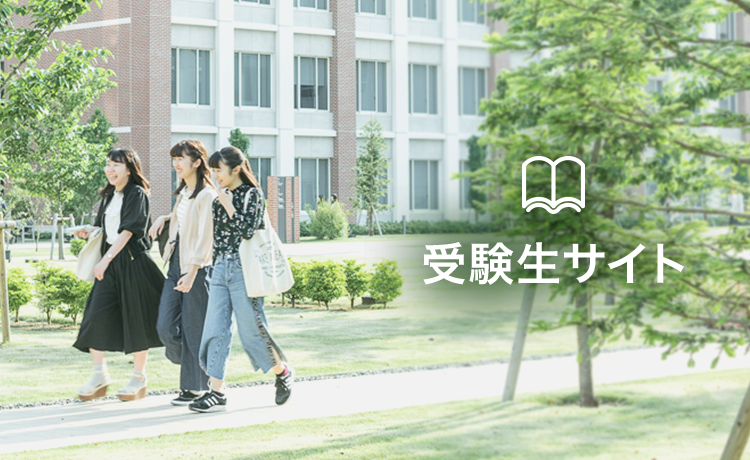2016年度秋学期第4回講演会が開催されました(英語版)
On the Tuesday afternoon, December 20, 2016, Graduate School of International Cooperation Studies in Kyorin University held the fourth lecture meeting of 2016 autumn semester. Based on her own experience in the United States and the 12 episode documentary film “Adrift without Roots” completed by herself, Dr. Gee-Schweiger(Maria Lixian Gee-Schweiger.PhD), taking California as an example, expounded her view towards the immigrant complex occurred in the collision of Eastern and Western culture after her investigation and analysis of the human environment of Chinese American. Dr. Gee-Schweiger went to the United States in 1992 and has settled there for 24 years. She has engaged in American education for 16 years, and has participated in Chinese-language media work for 22 years, as well as been in the Chinese associations for 23 years. During the time, Dr. Gee-Schweiger has published various books and magazine columns related to new immigrants through her research on the development of Chinese people in America for more than 160 years.
Following is the summary of the lecture note.
I. The reason why taking California as an example
The United States has a multi-ethnic culture. Immigration complex derives from immigrant culture. Chinese immigrants in the United States have a history for nearly 200 years and the differences between generations show different immigration complex. Today, the gross population of Chinese American is about 4,500,000, and nearly half of that consists of Chinese American in California and New York. Chinese American in California accounted for the 1/3 of the total number. California has about 1,253,000 Chinese American and New York has about 572,000. Considering the distribution of Chinese American, California is the most typical.
Also, the California area carries all the characteristics of Chinese immigrants. The objective reason is that San Francisco in North California is the earliest source of Chinese immigrants in the United States, and Los Angeles in South California is the largest gathering place for home to the Chinese American, and San Diego, also in South California, is the fastest growing region of Chinese population. On the other hand, the subjective reason is that California is the state where Dr. Gee-Schweiger has lived. Her life and study experience there has offered her the first-hand information.
Ⅱ. The current situation of five groups of Chinese American and the five periods in history
1. The concept of five Chinese American groups
(1)immigrants from Guangdong and Hong Kong
(2)immigrants from Taiwan
(3)immigrants from Vietnam, Cambodia and Laos
(4)immigrants from Chinese Mainland
(5)Chinese born in America over the successive generations
2. Five periods in history
The first period (1850-1899)
The first Chinese-language newspaper in America was published in 1850s. So, in order to always have evidence to follow, the period was set as the first one in the research. In this period, the gross of Chinese American population was 107,488. Most of them were immigrants from Guangdong and were working as laborers. Most the laborers gathered because a California railroad was being built at that time. Among them ninety-nine percent got together in the form of clan, but they didn’t form societies. The characteristics of their immigrant complex were the shortage of belonging, no wishes of staying in America, and the hope to make large money and to bring it back to home.
The second period (1900-1949)
In this period, the gross of Chinese American population was 117,629. The previous immigrants from Guangdong still held the dominant position. Most of them owned a restaurant or a laundry and had a low social identity. During the period, intelligentsia appeared. There were two reasons: one was that Chinese American attached importance to education---the later generation of Cantonese began to pursuit higher education; and the other was that the students from Chinese Mainland, who chose to study in America or Europe, decided to stay in America as China at that time was very chaotic. Because of that, the clan society formed in addition to some study societies. With the development of California railway from North California to Los Angeles in southern California, Chinese American had gradually moved to Los Angeles. After the completion of the railway, the majority of Chinese American changed to do business, considering China Town as their existent and spiritual support. Both clan and study societies were very flourishing in this period, but they were separated. However, both the common and the highbrow needed the identity provided by the American society and also despaired to take root in America.
The Third Period (1950-1979)
The gross population of Chinese American is 806,040.With the growth of Chinese from Taiwan, Vietnam, Cambodia and Laos, the immigrant elements became relatively complicated. Because the China-US relations deteriorated, it was hard for people from Chinese mainland to immigrate to America. Most abroad students came from Taiwan. The majority of them were children of the Kuomintang executives and merchants. They received favorable education since their infancy and had quality economic foundation. After graduation, most of them chose to stay in America and got access to work in the American mainstream society. Because of their high education and skills, they helped to change the idea that Chinese are merely workers and raised the status of Chinese invisibly. Because China and America broke off diplomatic relations at this period, Chinese lacked sense of belonging. Together with problems left over by history, they are inclined to Taiwan government emotionally and politically.
In this period there was another group. According to the American immigration policy, the number of immigrant every year is decided by the population quota and because of the unrest in Southeast Asia, people from Southeast Asia cannot go home but to apply for America as a Chinese. Especially in 1970s, a great number of refugees crowded into America, of whom the majority were illegal immigrants. Although their appearance made the Chinese American more complicated, they strengthened the Chinese American community at the same time. People from Vietnam, Cambodia and Laos had a strong sense of belonging. Illegal and legal immigrants strengthened not only the Chinese American community, but also the subject consciousness of belonging.
The fourth Period (1980-2000)
The gross population of Chinese American released by American government is 2,870,000; however, the actual number might be even larger. In this period, immigrants from Chinese mainland increased. The majority of them went to get a master or doctor degree and they integrated into the mainstream society after graduation and founded quantities of Chinese American communities. High quality talents injected new energy into those communities and became the main force, inclined to Chinese mainland. The feature is that graduated abroad students acted according to their volition, not willing to go back to hometown, not willing to get stationed.
The fifth Period (2000-2016)
The gross population of Chinese American is 4,500,000, giving priority to immigrants from Chinese mainland. Because of high-technology and the development of Internet, this period is called the fifth period due to its epochal difference from previous ones. Abroad students from the Chinese mainland after reform and opening up had already got married, started their careers and had their children. Their children mostly went to universities or went to work after graduation. With the economic rise and the promotion of international status, all immigrants, no matter old or new, took pride in their being Chinese American and the raise of China. Especially in the age of the Internet, the feature of immigrant complex in this age is not willing to go back to hometown, nor to get stationed, but to take pride in being Chinese American.
Ⅲ. To clarify the connotation of immigration complex
Through the analysis and comparison of the general situation of the immigration which is more than 160 years and the five historical stages of political and economic human environment, we have realized the heterogeneity and the convergence of the immigration complex from five major groups. The heterogeneity lies in the difference of cognitive, identity and belonging, classification and generation. And the convergence lies in the similarity of leaving one's native place, enduring humiliation, people-oriented, national sentiment and the worth of the human body.
Ⅳ. The rise and fall of contemporary five groups and the change of immigration complex
San Diego, California, United States, for example, in the five groups, the social organizations which are established after 1990 in mainland China have surpassed the other four groups, and have changed the original structure of different social groups. Until 2013, there have been 38 social organizations which use mandarin in 82 social organizations, which accounts 46%, and 37 social organizations are from mainland China that have surpassed other social organizations who use Mandarin, Cantonese and English, and this kind of case reflects the fact that the most new immigrants immigrated after the opening-up reformation, who are mostly scholars and don’t suffer too much pressure from traditional culture. Through the investigation of questionnaire and study, we have reached the conclusion that most mainland new immigrants are from the first generation, rarely from the third generation; Taiwanese immigrants are mostly from the second generation to the fourth generation; Guangdong old overseas Chinese are more than five generations. The inter-generational change of the population’s rise and fall is necessarily affect the connotation of immigration complex. And this research indicates that the more generations, the less immigration complex.
Ⅴ. The analysis of immigration complex
1 rational analysis: the three kinds of immigration complex
Type 1.The pain of staying at the original culture
Because of the different from the culture, social system and lifestyle, the immigrants felt the sense of alienation at different levels in the new cultural environment. They are far away from their local culture, but they can’t get involved in the mainstream society during a short period, as a result, under the collision of the two cultures, what the new immigrants feel is just alienation, loneliness and indifference. In the heterogeneous cultural split confrontation, their subconscious of revolting against the different culture is bound to strengthen their stay on mother culture mentality.
Type 2. To get rid of the confusion of mother culture
In the face of strong culture conflict, some people stay at the pain of staying away from their mother culture forever. However, more and more people are seeking the method to get rid of this annoyance in the collision of two kinds of culture. And this is mainly manifested in intellectual class. They want to get rid of the "marginal people" situation in the mainstream society, trying to accept western culture. Especially the second generation of the new immigrants, unlike their parents, most of them won’t be addicted in the pain of their lost identity; however, they will accept the influence of western culture actively, even with some rebellious mood to their mother culture.
Type 3. The sublimation of returning to their mother culture
In the age of the Internet, many new immigrants from intellectual class won’t be indulged to the nostalgia or rebellion toward their mother culture, however, they treat the disadvantages of “marginal people” as a kind of "survival advantage" to explore, in the mixture of the east and the west culture, they rebuilt their new cultural cognition, re-examine their born-with-mother culture and western culture which they are closely connected, and the conflicts and opportunities in their family life and work, and seek how to benefit from the living environment under the construction of the two kinds of culture. In a sense, this is a farewell also a surpass to their mother culture, in the seeking process of "individual value", they have accomplished the approval of the new culture. As a result, they are sending the elements of the Oriental culture to the western mainstream culture, and at the same time, they are blending the western culture into ancient eastern culture. This is a kind of ideal state, only a few people can achieve this mental state rationally.
”Adrift without Roots” records four Chinese American families living on the same street in the United States. Through their twelve months lives, recreate how they identify their self-existence values. The documentary consists of 12 episodes, 30 minutes per episode. American public education channel broadcast it for two years and many university libraries in the United States and Canada collect it as a textbook of “Asia research”. As a director and producer, Dr. Gee-Schweiger took two years to accomplish the movie which was awarded by Asian American Heritage Award for the 2009 Film Awards. The four families in the movie include four groups of five groups mentioned above. It reflects the level of cognition of the new immigrants in the mainstream society and the Chinese Society.
1 The family of Zhu: the author’s ex-husband, Cantonese, via Hong kong to the United States, from primary school to the University, became an American professor, retired, and chose going back hometown.
2 The family of Shen: Single father, studied in the United States in 60s from Taiwan, and settled down in the USA, but were deeply confused on how to educate three sons because of cultural differences between East and Wes.
3 The family of Zheng:: A single mother, studied in the United States from China in he 1980s. Her daughter was born in the United States. She tried to seek a balance in the eastern and Western culture in the treatment of her daughter with her ex husband custody.
4 The family of Burns: The husband is white and the wife is a native of Taiwan. The happy family was often challenged by culture. A mixed race children were often confused about their race.
Ⅶ Conclusion
Immigration and immigrant culture is a pair of twin sisters. Face it, and to solve the knot.
As a new immigrant from mainland China, Dr. Gee-Schweiger became a professor to teach Chinese in the United States.Then, she wrote Chinese becoming a Chinese writer, and gave lectures sharing life and mental state as a visiting professor in Jinan University, China. Besides, she is the co-founder of American Chinese Culture and Education Foundation, and the President of Chinese Writers Association of America. Meanwhile, in the promotion of Chinese language and culture while she was recognized and encouraged by the United States government. During
this period, Dr. Gee-Schweiger constructed the "individual values" in the two cultures: The life of 24 years in the United States, I have experienced the pain of staying with Mother Culture and the confusion of departing the Mother Culture. Finally I recognized the richness in life for living in two cultures. During this period, there are a lot of life transformations. With immigrants, regret always exists, but with a challenge in life, there is no reason to complain.>




![学納金サイト [在学生・保護者専用]](/assets/images/BlkFeatured_item_tuition.jpg)
